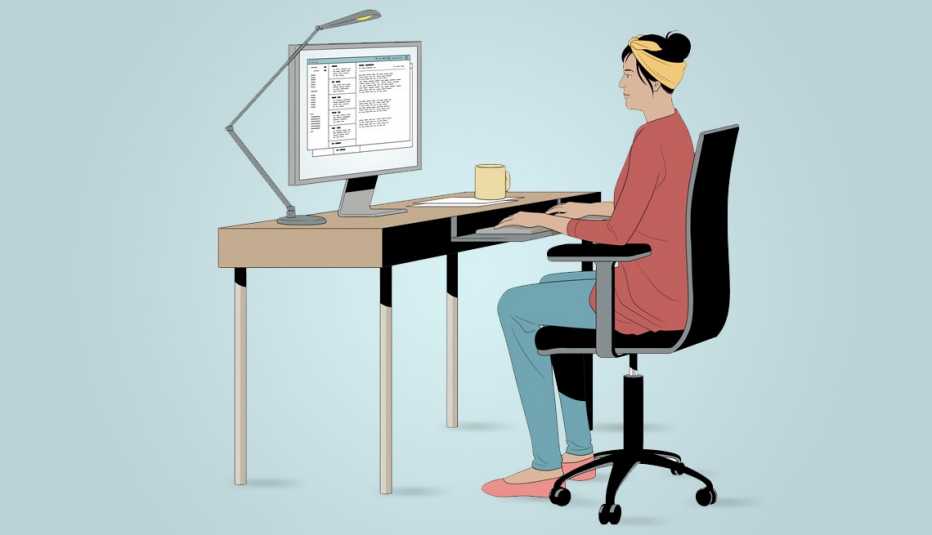Staying Fit


Pandemic posture habits could be affecting you without your even noticing.


AARP Membership— $12 for your first year when you sign up for Automatic Renewal
Get instant access to members-only products and hundreds of discounts, a free second membership, and a subscription to AARP the Magazine.
Taking long conference calls at the kitchen table or using your recliner as a workstation can lead to pain, stiffness and, eventually, injury. As many of us begin to head back to the office, it’s a great time to reassess your work space.
Move your monitor.
The top edge of your screen should be directly in line with your eye level, says Susan Kotowski, associate professor at the University of Cincinnati College of Medicine. If it’s too low, you’ll hunch over, creating neck pain. If you use dual monitors, put the most-used monitor directly in front of you.
Get up, stand up
You’ve probably heard how bad sitting is for your health. So, is a stand-up desk better? Yes and no.
In one study, half the participants developed lower-back pain after standing at an ergonomic desk for two straight hours. A better strategy is to change positions every 30 minutes or so, alternating between standing and sitting.
Upgrade your lighting.
Aging eyes need more light than younger ones. Kotowski recommends task lighting — an individual light, such as a reading or desk lamp, that you can aim at a specific spot.
Adjust your chair.
Your office chair likely has adjustable height, armrests and back support. To find your ideal settings, do this:
- Sit with your back fully against the back of the chair.
- Adjust the seat height so that your feet are flat on the ground. Your knees, feet and ankles should come to a 90-degree angle.
- Move the armrests so that your elbows form a 90-degree angle at your desk. If you’re going to be telecommuting for a while more, consider investing in a work chair that allows for a similar position.
Set the right desk height.
With your chair at your work surface, you should be able to comfortably maintain the 90-degree angles mentioned above. If your desk is too high, add an ergonomic step stool under your desk to rest your feet on. If it’s too low, use furniture risers to raise it.
Clamp your keyboard.
Invest in a keyboard tray, which clamps onto the desk edge and holds your keyboard at a more ergonomically friendly level. Typing at desk height can cause undue stress on the neck and lower back.

































































More on health
Surprising Things That Affect Your Balance
Building strength and increasing flexibility are not the only ways to reduce your chances of a fallSurprising Parts of the Body You Need to Exercise Regularly
Your arms, legs and back aren’t the only areas that need strengthening
7 Bad Health Habits and How to Break Them
Usher out your old ways and welcome in some new, healthier routines